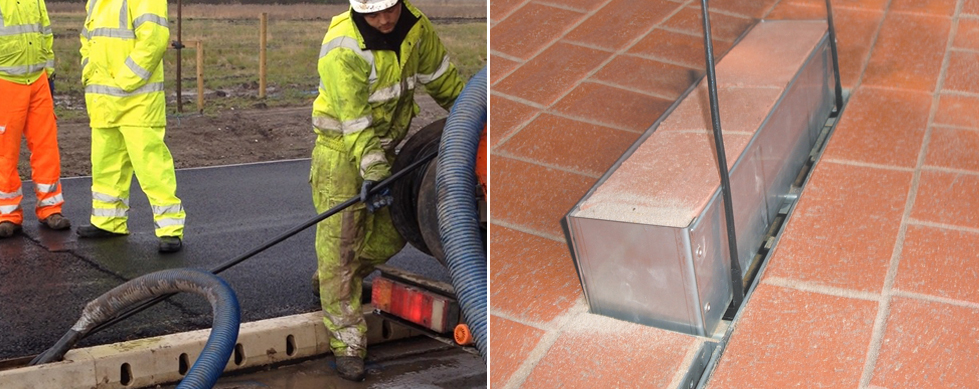
Drainage maintenance should be a top priority in 2020
Unpredictable weather patterns have continued to hit the headlines this year. As weather volatility increases, the risk of flooding across the UK is likely to rise. In the first few months of this year, the UK has already been hit by major storms Ciara and Dennis. These changes are putting many buildings, as well as wider infrastructure, at risk. If changing weather patterns are to become the norm, what more can be done to mitigate the risk?
Rob Butcher, Design Services Manager at ACO Water Management, explains what work should be done in order to avoid a worsening of the UK flooding crisis.
The rising problem of flooding
Weather, and particularly flooding, is again dominating the news agenda. As well as experiencing record temperatures in 2018 and 2019, the country has also seen torrential downpours, Storms Ciara and Dennis and the issuing of hundreds of related flood alerts across the UK. What’s striking is that in the last few years this pattern has become more and more regular.
Some forecasters are predicting that weather volatility could become a long-term occurrence. With this in mind, it is becoming clear that all parties involved in water management system design, from contract engineers and specifiers to local authorities and facilities managers, need to factor in increased contingency for climate change.
The reality facing the UK is that more stringent maintenance processes will be required if the UK is to avoid the issues rising in the future. To achieve this, it is very likely that greater funding will be required. Let’s take a closer look at the impact maintenance has on drainage performance.
The importance of drainage maintenance
One area that is likely to exacerbate the effects of flooding is the maintenance of drainage solutions; or more accurately, the lack of it. The responsibilities tend to lie with either local councils or facilities managers, and in many cases, the responsibility for undertaking the physical task is outsourced to a third-party private contractor.
It is essential that regular inspection routines are carried out on drainage systems. While it may seem obvious, it is quite surprising to see how often drainage maintenance is neglected in the UK. By carrying out inspections at frequent and regular intervals, depending on the location and environment, flood risks can be identified and problems can be rectified early.
Inspections mainly lead to the removal of debris which accumulates over a period of time. By ensuring maintenance is not neglected, it not only helps to keep the original hydraulic capacity of the system, but it also ensures safety for pedestrians and vehicular traffic. Through the prevention of flooding.
While inspections should be a regular occurrence regardless of weather, something which is often overlooked is the need for additional cleaning of channels following heavy storms, as the risk of excess silt building up increases. This is especially problematic if the rainfall has followed periods of dry weather.
Building maintenance into the design
It goes without saying that some of the flooding issues in the UK are unavoidable and inevitable. In August 2019, for example, Whaley Bridge was evacuated due the high risk of its dam collapsing. However, if the UK experiences extreme weather episodes, such as two weeks’ worth of rain in a 24-hour period, regular maintenance of drainage channels could mitigate long term damage caused by extensive flooding.
Identifying the potential problems early is key and building engineers and project managers have an important role to play in ensuring they are collaborating with all stakeholders. This includes engagement with water management specialists at the earliest opportunity. By working with drainage experts, it ensures that appropriate levels of access points will be factored in at the design stage.
Failing to incorporate sufficient access points, and not undertaking maintenance, will inevitably lead to flooding problems. Many water management systems have been in place for a number of years and these have not necessarily been designed with a contingency plan to deal with the more frequent weather changes the UK has experienced in recent years. Surface water drainage systems are often designed to cope with a 1:30-year storm, which is problematic as the combination of a low hydraulic capacity design and poor maintenance is likely to heighten the flood risk.
Smart drainage design
While we can’t control the weather patterns that the country is experiencing, engineers do have an important role to play in ensuring that flood risks are mitigated. Those working on the design of buildings and infrastructure which require drainage systems and roads should look towards utilising design platforms which identify accurate rainfall data of the geographical area they are working on, and manage drainage appropriately.
ACO Water Management has developed an online hydraulic design software which allows designers and engineers to plan ahead with all the knowledge they require for a building project. Taking advantage of ACO’s free QuAD tool can help engineers understand the environmental challenges they may face ahead of the build phase of a project. This is achieved through the software’s ability to integrate with Google Maps, meaning users can input their site’s exact location and automatically receive the rainfall intensity for the area. Users can also test their proposed maintenance schedule using the in-built resilience feature.
The importance of both adequately and regularly maintaining drainage channels cannot be stressed enough, especially if further heatwaves and subsequent downpours become the norm in the UK.
When working on a project and considering how to mitigate a potential flood risk, it is advised that you get in touch with a water management specialist. For further support, utilising tools like QuAD can assist in the design for your specific project, factoring in the changing climate and up-to-date calculations.
For more information on ACO Water Management, and its QuAD cloud software, please visit stand E150 at Futurebuild 2020 or visit https://www.aco.co.uk/quad-hydraulic-design-2.0.
For more information on channel drainage maintenance go to https://www.aco.co.uk/channel-drainage-maintenance